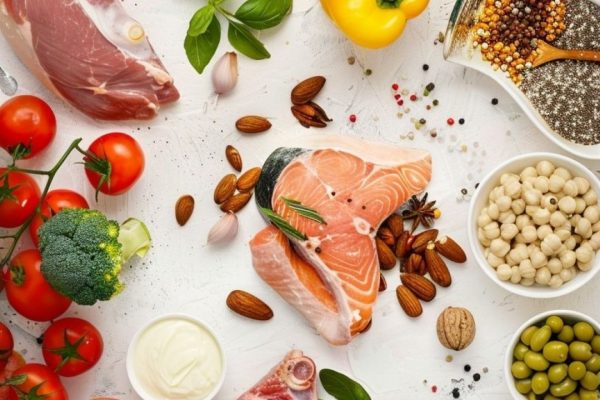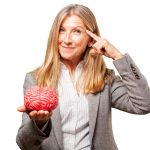The older you get, the more protein you need.
And it’s not just about maintaining muscle strength. Protein also helps build strong bones, skin and hair. It aids digestion and has an important role in the regulation of hormones.
So protein is definitely an important part of your diet. But there is a problem…
Up to 46% of older adults do not consume enough protein on a regular basis. That’s nearly half!
To top it off, your ability to synthesize protein declines with age. So you actually need to increase your protein intake over the years.
If not, you may experience symptoms of deficiency. It may start out with something along the lines of skin, hair and nail problems. But later, more critical health issues may arise…
6 Consequences of Low Protein Intake
Loss of muscle strength and difficulty taking part in physical activities. This is because certain amino acids found in protein actually activate the synthesis of protein itself. Without these protein-based amino acids, your body’s ability to repair and replace protein in muscle tissue declines significantly, so your muscles start becoming sarcopenic… shrinking in size.
Increased risk of bone fractures. A study published in 2021 found that older adults with the highest protein consumption have greater bone mineral density in their entire body. This includes the hip and lumbar spine, which are often the cause of disability as we age.
A greater chance of developing infections. When the body’s total protein declines, it not only affects the body’s musculoskeletal system; it also reduces the function of the body’s immune response. Thus, it is very important not only to keep your protein levels at a healthy range, but to increase protein intake whenever you are ill or hospitalized.
Slower wound healing. Protein is a key building block when it comes to repairing skin and other body tissues. If you have an open wound or recurring wound, increased protein intake may help improve healing time and prevent recurrence.
Fluid buildup in the body’s tissues (edema). When blood protein is low, water leaks out of the blood vessels and into the tissues. So the body starts accumulating fluid. It can build up in the extremities (feet, ankles, legs, arm), and also in the organs (heart, lungs, etc.)
Higher risk of fatty liver. In the past few decades, we’ve seen a huge uptake in non-alcoholic fatty liver disease (NAFLD). This happens when too much fat accumulates in the liver. A 2020 study showed that a high-protein, low-calorie diet decreases liver fat by about 40% compared to a low-protein, low-calorie diet.
Where to Get More Protein in Your Diet
When people think of protein, they often think of meat.
But meat doesn’t need to be at the center of your plate at every single meal. In fact, I recommend that only about 15% of your diet contains cuts of grass-fed beef and pasture-raised poultry. The other 85% should be whole plant-based food.
For a higher protein intake, I add pulses like beans, peas and lentils to my meals. These are all low-fat source of protein and fiber, so they aren’t fattening. Put them in soups, make bean dip, use them to top your salads or make your own chickpea hummus.
And nuts… I love nuts! I eat a handful of nuts every single night. And there are so many different types of high-protein nuts to choose from; almonds, pistachios, walnuts and more. (Remember, there are whole species of animals that survive just on nuts, like squirrels and chipmunks!)
Seeds, too. There is a lot of energy and protein in seeds. After all, a seed has to grow a whole new plant, right? Toss them into your yogurt. Blend them into smoothies. Use them to top your salads and veggies.
Eggs are another excellent source of protein. It’s a myth that they’re bad for you. But it’s a good idea to keep your eggs intact (not breaking the yellows) to keep the cholesterol in the eggs from oxidizing. They are much healthier if you prepare them over easy, over well, poached or boiled.
Pastured eggs are the kind that I buy. They are, by far, the healthiest eggs you’ll find today.
Of course there’s always fish. I recommend cold-water, wild-caught fish. Cold water species aren’t just high in protein, they have a lot more omega-3 fatty acids than other fish. The omega-3s are what allow the fish to bend its body and swim. The colder it is and the deeper they swim, the more omega-3 fatty acids they make.
Ultimately, we need approximately 60-75 grams of protein daily, depending upon weight. Researchers recommend 1 to 1.2 grams of protein per kilogram body weight (one kilogram is about 2.2 pounds), preferably combined with some light resistance training each day for your muscles.
The exception to this rule is for those with poor kidney function. If your kidneys aren’t working well, which often occurs in later years, too much protein can be a problem.
SOURCES:
Krok-Schoen JL, Archdeacon Price A, Luo M, Kelly OJ, Taylor CA. Low Dietary Protein Intakes and Associated Dietary Patterns and Functional Limitations in an Aging Population: A NHANES analysis. J Nutr Health Aging. 2019;23(4):338-347.
Deer RR, Volpi E. Protein intake and muscle function in older adults. Curr Opin Clin Nutr Metab Care. 2015 May;18(3):248-53.
Yang F, Yang Y, Zen L, Chen Y, Zeng G. Nutrition Metabolism and Infections. Infectious Microbes & Diseases. 2021 Sep;3(3):p134-141.
Chernoff R. Protein and older adults. J Am Coll Nutr. 2004 Dec;23(6 Suppl):627S-630S.
Xu C, Markova M, Seebeck N, Loft A, Hornemann S, Gantert T, Kabisch S, Herz K, Loske J, Ost M, Coleman V, Klauschen F, Rosenthal A, Lange V, Machann J, Klaus S, Grune T, Herzig S, Pivovarova-Ramich O, Pfeiffer AFH. High-protein diet more effectively reduces hepatic fat than low-protein diet despite lower autophagy and FGF21 levels. Liver Int. 2020 Dec;40(12):2982-2997.



